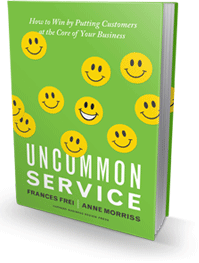 As noted in an earlier post, the modern business world is results-oriented and as a result it is very common for some organizations to be overly focused on "Execution", sometimes at the expense of good strategy (and many other things).
As noted in an earlier post, the modern business world is results-oriented and as a result it is very common for some organizations to be overly focused on "Execution", sometimes at the expense of good strategy (and many other things).
But what about Strategies (and their creators) that live in the clouds and ultimately leave the "executionists" with nothing to go on? We've all seen examples of a strategy so grand that it goes beyond the executional means of it's owners, or is disconnected from the reality of your current marketplace and even some that no one understands...
How does a good strategy get built? And what is it about a good strategy that makes the flawless jump to execution?
Today we'll focus on doing this for internal projects in big organizations. This is a frequently overlooked area and a source of more waste and mistakes in big corporations than some of the unsuccessful customer-facing expirements that go on. However, the process is almost the same:
4 Techniques to Strategies That Can Execute
1. Identify Your Customer - When executing large projects that impact dozens, hundreds or sometimes thousands of colleagues around the world, you need to be very clear about who your customer is. Just because your company has a "Customer-First" culture doesn't mean you all have the end-user as your customer. (See another earlier post on this topic). Your end-customer is actually an internal colleague, and that can be a hard adjustment to make. In a previous career role, I had a project that had approximately 10,000 internal customers. Understanding that it was my job to make their jobs easier was half the battle.
2. Use Your Stakeholders as a Research Source - for a consumer marketing campaign, developing a new product, entering a new market, etc. we always conduct research, correct? Is there any reason why you don't do the same thing with your internal projects? Pulling together a "virtual team" (v-team) is a great way to have your own internal resource to guide everything you do. The beauty of this is rather than thinking about how you solve the puzzle of motivating  everyone to think like you do, you use the team to not only collectively validate YOUR ideas, but to improve on them, expand on them and add entirely new ideas you will never think of yourself. "Uncommon Service", published earlier this year, uses a fantastic metaphor that applies here: "the special challenge of service delivery is that your customers routinely wander onto the shop floor - unannounced - and tinker with the assembly line...success isn't just a matter of keeping them out of trouble. Your customers need to play a productive role on the line itself, and to do so, they need training, guidance, safety goggles and more."
everyone to think like you do, you use the team to not only collectively validate YOUR ideas, but to improve on them, expand on them and add entirely new ideas you will never think of yourself. "Uncommon Service", published earlier this year, uses a fantastic metaphor that applies here: "the special challenge of service delivery is that your customers routinely wander onto the shop floor - unannounced - and tinker with the assembly line...success isn't just a matter of keeping them out of trouble. Your customers need to play a productive role on the line itself, and to do so, they need training, guidance, safety goggles and more."
Any big organization has a rich, built-in source of research, ideas and input. Getting them on-board EARLY as true stakeholders in your process will lead to strategies that survive through execution.
3. Have Some Rules Everyone Has Bought Into - In order to let everyone "wander the shop floor and tinker", you will need some ground rules to manage. Everyone should be in agreement with your rules before the can participate. Why? This creates a simple line in the sand to ensure you only involve those who are truly interested. No more than 3-5 rules are needed, but they communicate some gravity for your project and will help you later. My favorite rule when running large v-teams was "A non-response will be interpreted as validation". This helps keep everyone involved, paying attention and nullifies that "silent veto" that you might see come back at you later when you are further into the process.
4. Have a Robust Validation Process - One of the most overlooked areas that leads to failure more than any other is the lack of good validation processes. Strategy is too often thought of as an intellectual exercise when it really is a process exercise. Going back to your "v-team" and validating your work is the next step in that process. Getting everyone to sign off in agreement makes it easy on everyone, why?
a. Everyone now has a stake in your success. Who doesn't want to see something with their name on it succeed?
b. If you then work with additional resources to execute, you now have the authority of your v-team to help influence those you work with in execution who may not have been part of the original v-team.
c. They in turn, will find it easier to move forward and risk the temptation of being a wild-card because they now have their backs covered by the sign-off of a large, diverse group of stakeholders. You would do even better if you had included them in your original v-team, but that is not always possible.
d. Shared accountability of this process makes it easier to speak up, help you avoid mistakes, and reduces the risk of you (and your team) of being judged only for the results..sometimes things don't work, but that's no reason not to push on with what you learned from mistakes!
e. Finally, given the nature of big orgs to duplicate work or create projects that overlap in places, your process allows you to have more eyes and ears to help you manage those conflicts early and keep moving things forward.
There are a LOT of factors that can make or break the execution of your work or project. Thinking of your strategic planning as a process rather than an art-form or intellectual expirement will help make ensure your execution can not only be carried out, but carried out by others too.




